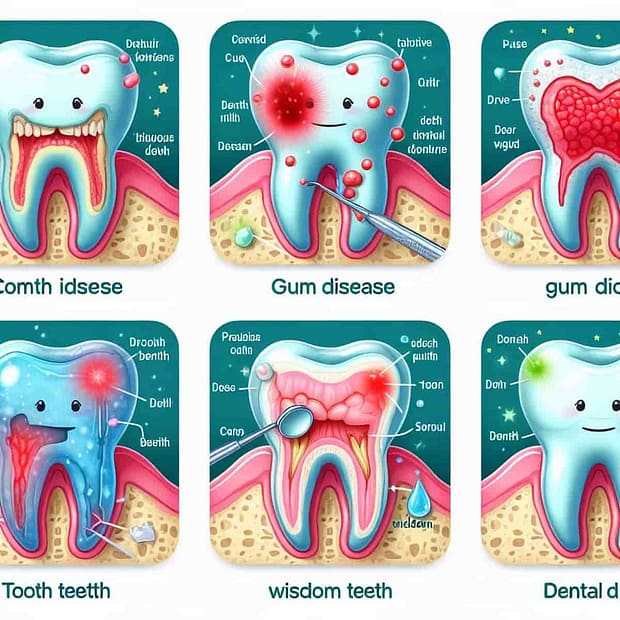Dental emergencies can occur suddenly, causing pain, discomfort, and potential complications if not addressed promptly. Understanding the causes, recognizing symptoms, and knowing how to provide immediate care are essential for managing dental emergencies effectively. Let’s explore dental emergencies in detail:
Key Takeaways:
- Dental emergencies can result from various factors, including trauma, infection, tooth decay, and orthodontic issues.
- Symptoms of dental emergencies may include severe tooth pain, swelling, bleeding, broken or knocked-out teeth, and loose dental appliances.
- Immediate care for dental emergencies may involve pain relief, controlling bleeding, stabilizing broken teeth, and seeking prompt dental treatment.
Causes of Dental Emergencies:
Dental emergencies can arise from several factors, including:
- Trauma: Accidents, falls, sports injuries, and physical altercations can cause dental trauma, such as broken teeth, dislodged teeth, or soft tissue injuries.
- Infection: Untreated dental infections, such as abscesses or periapical infections, can lead to severe pain, swelling, and systemic complications.
- Tooth Decay: Advanced tooth decay (cavities) can cause toothache, abscess formation, and dental emergencies if left untreated.
- Orthodontic Issues: Orthodontic appliances, such as braces or wires, can cause irritation, ulcers, or injuries to the mouth and gums if not properly maintained or adjusted.
- Dental Procedures: Complications from dental procedures, such as failed root canals, broken dental restorations, or allergic reactions to materials, may require immediate attention.
Symptoms of Dental Emergencies:
Symptoms of dental emergencies may vary depending on the underlying cause but commonly include:
- Severe Tooth Pain: Intense, persistent toothache that interferes with daily activities and sleep.
- Swelling: Swelling of the gums, face, or jaw, indicating infection or trauma.
- Bleeding: Excessive bleeding from the gums, lips, tongue, or oral tissues due to injury or infection.
- Broken or Knocked-Out Teeth: Fractured, chipped, or completely dislodged teeth due to trauma or decay.
- Loose Dental Appliances: Loose, broken, or displaced dental crowns, fillings, bridges, or orthodontic appliances.
- Difficulty Eating or Speaking: Discomfort or difficulty chewing, biting, or speaking due to dental pain or injury.
Immediate Care for Dental Emergencies:
Providing immediate care for dental emergencies can help alleviate pain and prevent further complications:
- Pain Relief: Rinse the mouth with warm saltwater, apply a cold compress to the affected area, and take over-the-counter pain relievers as directed for temporary relief.
- Controlling Bleeding: Apply gentle pressure to the bleeding area with clean gauze or a moist tea bag. If bleeding persists, seek medical attention.
- Stabilizing Broken Teeth: Save any broken tooth fragments and rinse them gently with water. If a tooth is completely knocked out, hold it by the crown (not the root), rinse it gently, and try to reinsert it into the socket if possible. If not, place the tooth in milk or a tooth preservation solution and seek immediate dental care.
- Addressing Infections: If you suspect a dental infection (abscess), rinse the mouth with warm saltwater and seek prompt dental treatment to prevent further complications.
- Contacting Emergency Dental Services: If the dental emergency occurs outside regular office hours or on weekends or holidays, contact emergency dental services or visit the nearest emergency room for assistance.
Prevention of Dental Emergencies:
Preventing dental emergencies involves adopting good oral hygiene habits and minimizing risk factors:
- Maintain Oral Hygiene: Brush teeth twice daily with fluoride toothpaste, floss daily, and schedule regular dental check-ups for preventive care.
- Wear Protective Gear: Use mouthguards during sports activities to protect teeth from trauma and wear protective eyewear when necessary.
- Avoid Risky Behaviors: Avoid chewing on hard objects, using teeth as tools, or engaging in activities that may result in dental trauma.
- Quit Smoking: Tobacco use increases the risk of gum disease, tooth decay, and oral cancer, so quit smoking to improve oral health.
- Seek Prompt Treatment: Address dental issues promptly before they escalate into emergencies, and follow through with recommended dental treatment and preventive care.
In conclusion, dental emergencies can be distressing, but with prompt recognition and appropriate care, most dental issues can be managed effectively. By understanding the causes, recognizing symptoms, and knowing how to provide immediate care, individuals can address dental emergencies with confidence and minimize potential complications. Remember, if you experience a dental emergency, don’t hesitate to seek professional dental care promptly for proper evaluation and treatment. Early intervention can make a significant difference in outcomes and help preserve oral health and function.














